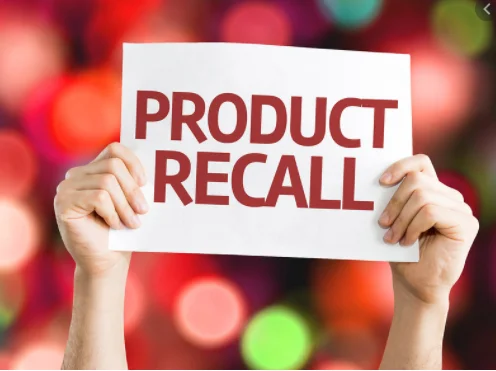Unlocking the Science of Bioequivalence Studies: Unveiling the Key to Generic Medications
Bioequivalence studies play a pivotal role in the pharmaceutical industry by ensuring the safety and effectiveness of generic medications. These studies are designed to demonstrate that a generic drug product is pharmaceutically equivalent and bioequivalent to its reference-listed drug (RLD). In this comprehensive blog post, we will delve into the science behind bioequivalence studies, exploring their purpose, regulatory requirements, methodologies, and their significance in providing affordable and accessible healthcare options to patients worldwide.
- Understanding Bioequivalence Studies
Definition and Objectives:
Bioequivalence studies are clinical trials that aim to establish whether a generic drug product is equivalent to its corresponding brand-name RLD in terms of pharmacokinetic parameters, such as absorption, distribution, metabolism, and elimination. These studies provide evidence that the generic drug performs in the same manner as the RLD, ensuring its safety and effectiveness.
Importance of Bioequivalence Studies:
Bioequivalence studies are crucial in facilitating the availability of generic medications, which offer affordable alternatives to brand-name drugs. These studies allow regulatory authorities, healthcare professionals, and patients to have confidence in the quality, efficacy, and safety of generic products. By promoting competition in the pharmaceutical market, bioequivalence studies contribute to reducing healthcare costs and increasing access to essential medications.
- Regulatory Requirements for Bioequivalence Studies
International Regulatory Agencies:
Regulatory agencies worldwide, such as the U.S. Food and Drug Administration (FDA), the European Medicines Agency (EMA), and the World Health Organization (WHO), provide guidelines and regulations governing bioequivalence studies. These agencies establish the standards and criteria for demonstrating bioequivalence, ensuring consistent evaluation across countries and regions.
Study Design and Statistical Considerations:
Regulatory agencies specify the study design, sample size, statistical analyses, and acceptance criteria for bioequivalence studies. The most commonly employed study designs are two-period, two-sequence crossover designs, where participants receive both the generic and the RLD in a randomized order. Statistical analyses, including pharmacokinetic parameters and confidence intervals, are used to compare the generic drug’s performance with the RLD.
Acceptance Criteria:
Acceptance criteria for bioequivalence studies are established based on the extent of variability observed between participants and the reference product. These criteria ensure that the observed differences in pharmacokinetic parameters fall within a predefined range, demonstrating that the generic product is bioequivalent to the RLD.
III. Methodologies and Challenges in Bioequivalence Studies (Approximately 1,500 words)
Pharmacokinetic Studies:
Pharmacokinetic studies measure drug concentrations in blood or plasma over time to assess the drug’s absorption, distribution, metabolism, and elimination. These studies involve collecting multiple blood samples from participants following drug administration. Bioanalytical methods, such as liquid chromatography and mass spectrometry, are used to quantify drug concentrations.
Clinical Endpoint Studies:
In some cases, bioequivalence can be established through clinical endpoint studies, which directly evaluate the drug’s therapeutic effect or response. Clinical endpoint studies are typically conducted for drugs that have a narrow therapeutic index or for which pharmacokinetic measurements alone may not accurately reflect their therapeutic efficacy.
Challenges in Bioequivalence Studies:
Bioequivalence studies face various challenges, including intra- and inter-subject variability, formulation differences, food effects, and potential drug interactions. Addressing these challenges requires meticulous study design, rigorous participant selection, and comprehensive statistical analyses.
- Considerations for Generic Drug Development
Analytical Testing:
Generic drug developers must demonstrate that their product is pharmaceutically equivalent to the RLD by conducting comprehensive analytical testing. This includes evaluating the drug’s physical and chemical properties, as well as assessing its formulation, dosage form, and manufacturing process.
Formulation Development:
To ensure bioequivalence, generic drug developers must closely match the formulation of the RLD, including the active ingredient, inactive ingredients, and dosage form. Formulation development requires careful consideration of factors such as stability, solubility, bioavailability, and patient acceptability.
Regulatory Filings and Abbreviated New Drug Applications (ANDAs):
To gain regulatory approval, generic drug manufacturers submit an Abbreviated New Drug Application (ANDA) that includes comprehensive data demonstrating the drug’s bioequivalence and pharmaceutical equivalence to the RLD. This submission includes data from bioequivalence studies, analytical testing, and manufacturing information.
- Impact and Benefits of Bioequivalence
Cost-Effectiveness and Access to Medications:
Bioequivalence studies enable the production of generic drugs, which are often significantly more affordable than their brand-name counterparts. These cost savings make medications more accessible to patients, leading to improved healthcare outcomes and increased patient adherence to prescribed therapies.
Pharmaceutical Competition and Market Dynamics:
Bioequivalence studies foster healthy competition in the pharmaceutical market, promoting innovation and driving down prices. Increased competition encourages brand-name manufacturers to invest in research and development while providing patients with multiple treatment options.
Patient Confidence and Safety:
By establishing bioequivalence, these studies instill confidence in patients, healthcare professionals, and regulatory authorities that generic medications are as safe and effective as their brand-name counterparts. Bioequivalence studies serve as a crucial quality assurance mechanism, ensuring that generic drugs meet the same high standards of safety and efficacy.
Global Public Health Impact:
Bioequivalence studies play a vital role in improving global public health by enabling the production of high-quality, affordable generic drugs. These medications are instrumental in combating diseases, managing chronic conditions, and addressing public health challenges worldwide.
Conclusion
Bioequivalence studies are indispensable in ensuring the safety, efficacy, and accessibility of generic medications. Through rigorous scientific evaluations, these studies establish the equivalence of generic drugs to their brand-name counterparts, paving the way for increased patient access to affordable healthcare options. Regulatory guidelines, robust study designs, and statistical analyses are essential in conducting reliable bioequivalence studies. The impact of these studies extends beyond cost savings, fostering pharmaceutical competition, promoting patient confidence, and contributing to global public health. By continually advancing the science of bioequivalence, we can continue to drive innovation, enhance patient care, and build a more inclusive and sustainable healthcare system for all.
